#Juan II de Aragon
Text







A guide through the monarchs of Aragon in La Catedral del mar & Los Herederos de la tierra
@asongofstarkandtargaryen
During the series the role of the members of the monarchy is secondary, but they are used to help to establish a concrete historical context and they're very determinant in the situation of the Puig and Entanyol families involving political estrategies of supporting this or that king, that gave them benefits or dacay (Arnau's rise with Pedro IV, Genís & Roger rise with Juan I and Martín I and Bernat with Fernando I). So, I wanted to make a recopilation of the monarchs shown during these series and their families.
House of Aragon/ House of Barcelona (descendants of the Jimena dinasty)
The Jimena dinasty is called like that because its origin was Jimeno "the Strong", grandfather of Eneko Arizta, and one of its branches was the Arista-Iñiga dinasty started by Eneko.
Eneko, his son García Iñiguez and his grandson Fortún Garcés were Lords of Pamplona, Fortún Garcés married Awriya bint Lubb ibn Musa (great-grandaughter of Musa the Great), and one of their daughters was Oneka Fortúnez, who married Abd Allah I of Cordoba (their son was Muhammad, who fathered the calipha Abd al-Rahman III with a basque woman called Muzna) and then Oneka married Aznar Sánchez de Larraún, and had a daughter with him, Toda Aznárez. Toda married Sancho Garcés I, the truly first king of Pamplona, was Sancho Garcés I (the first king of the Jimena dinasty).
Sancho Garcés III (992-1036) was king of Pamplona, Count of Aragon and king consort of Castile, whose bastard son with Sancha de Aibar, Ramiro I, inherited the counties of Aragon, Sobarbe and Ribagorza, and united them to form the kingdom of Aragon.
Then Petronila I (1136-1173), Ramiro I's great-grandaughter, married Ramón Berenguer IV count of Barcelona. Their son Alfonso II of Aragon was the first king of the Crown of Aragon and Pedro IV's great-great- great-grandfather.
In summary all the Aragonese monarchs are descedants of Eneko Arizta (and that's the way we can link Irati with LCDM/LHDLT)
Pedro IV
Pedro IV of Aragon, II of Valencia and I of Mallorca (Balaguer, Lleida, Catalonia, September 5, 1319 - Barcelona, Catalonia, January 5, 1387), called "the Ceremonious" or the Punyalet ('the one with the dagger', due to a dagger he used to carry), son of Alfonso IV of Aragon and Teresa de Entenza.
King of Aragon, Valencia and Mallorca (1344-1387); Duke of Athens (1380-1387) and Neopatria (1377-1387); count of Barcelona (1336-1387) and of Ampurias (1386-1387).
In 1338 he married María de Navarra (1326-1347), daughter of Felipe III and Juana II of Navarra. Offspring:
Constanza (1343-1363), married in 1361 to Federico III of Sicily, and Juana (1344-1385), married in 1373 with Juan I de Ampurias.
In 1347 he married Leonor of Portugal (1328-1348), daughter of Alfonso IV of Portugal. She died the following year of the Black Death.
In 1349 he married Eleanor of Sicily (1325-1375), daughter of Pedro II of Sicily. Offspring:
Juan I (1350-1396), Martin I (1356-1410) and Leonor (1358-1382), married to Juan I of Castile. Leonor was the mother of Fernando I of Aragon.
In 1377 he married Sibila de Fortiá, daughter of the Empordà nobleman Berenguer de Fortiá. Offspring:
Isabel (1380–1424), who married Jaime II of Urgel, future suitor for the aragonese crown.
During his reign the Aragonese expansionism in the Mediterranean continued, focused on southern Italy and Greece.
Although he was ally of Alfonso XI, Pedro IV had a great rivalry with his son Pedro I of Castile and fought against him in some conflicts, like the War of the two Pedros (1356-1369) and the first Castilian Civil War (1351-1369), in which Pedro I was supported by Pedro I of Portugal (one of his bastard sons, Juan I of Portugal, was the founder and first king of the Avis dinasty) and Muhammad V of Granada, and Pedro IV supported the bastard children of Alfonso XI with his lover Leonor de Guzmán (Pedro de Aguilar, Sancho Alfonso, Fadrique Alfonso, Enrique II of Castile, Fernando Alfonso, Tello, Juan Alfonso, Juana Alfonso, Sancho and Pedro Alfonso), who started several revolts against Pedro I of Castile. The wars ended when Enrique killed Pedro I, and he became the first king of Castile of the Trastamara dinasty.
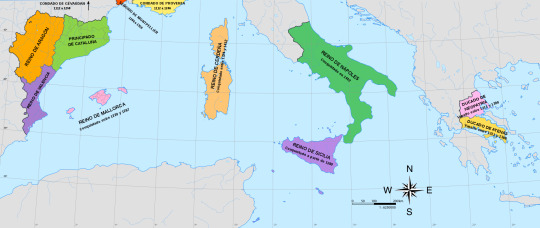
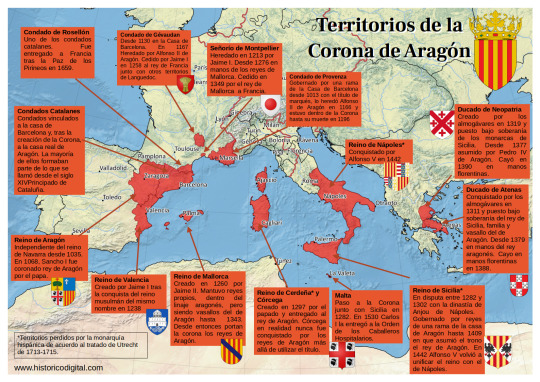
Sibila de Fortiá
Sibila de Fortiá (Fortiá, Girona, Catalonia, 1350 - Barcelona, Catalonia, 1406), queen consort of the Crown of Aragon (1377-1387). She was the daughter of Berenguer de Fortiá and his wife Francesca de Vilamarí. In 1371 she married for the first time Artal de Foces, an Aragonese nobleman, whom she widowed in 1374, and then she the lover of Pedro IV and had a daughter with him, Isabel.Pedro and Sibila married in 1377. After the wedding, Pedro surrounded himself with Empordà nobles as well as Sibila's relatives.
Pedro IV was very ill at the end of the year 1386, and Sibila, fearful of the wrath of the future King Juan, fled to the castle of San Martín de Sarroca (Barcelona), which belonged to her brother Bernat de Fortiá. There she was imprisoned by Juan I, who treated her harshly, accusing her of abandoning the king on his deathbed and of several robberies in the palace. She was confined in the castle of Moncada (Barcelona) until she renounced his property granted by the king. Finally, Sibila retired to the convent of San Francisco in Barcelona, where she died in 1406.
Juan I
Juan I of Aragon, called the Hunter or the Lover of All Kindness (Perpignan, Occitania, France, 1350 - Torroella de Montgrí, Girona, Catalonia, 1396), King of Aragon, Valencia, Mallorca, Sardinia and Corsica, and Count of Barcelona, Roussillon and Cerdanya ( 1387-1396). Son of Pedro IV and Leonor of Sicily.
His first marriage was with Marta de Armagnac (1347-1378), daughter of Count Juan I de Armagnac. With whom he had: Jaime (1374), Juana, (1375-1407) who married Mateo, Count of Foix. After the death of her father, she claimed the throne with her husband, but they were defeated; Juan (1376), Alfonso (1377) and Leonor (1378).
Widowed, Juan married Violante de Bar (1365-1431), daughter of Robert I, Duke of Bar. Offspring:
Jaime Duke of Girona (1382-1388), Yolanda, who married Louis II of Anjou, titular king of Naples. Their son, Luis III, claimed the throne after the death of Martín I, in the engagement of Caspe; Fernando Duke of Girona (1389), Antonia (1391-1392), Juan Duke of Girona (1392-1396), Eleanor (1393), Pedro Duke of Girona (1394) and Juan (1396)
Martin I
Martin I of Aragon, also called the Human or the Old (Girona, July 29, 1356-Barcelona, May 31, 1410), was king of Aragon, of Valencia, of Majorca, of Sardinia and count of Barcelona (1396-1420) and king of Sicily (1409-1410). Second son of Pedro IV of Aragon and his third wife Leonor of Sicily.
Martín was called "the Human" because of his great passion for the Humanities and books. The library of Martín I is the first that could be considered from Renaissance, if at that time in the history of the Iberian peninsula the term can already be used.
Martin married in 1372 with Maria de Luna, daughter of Lope, the first count of Luna, in 1374. From this union they were born:
Jaime (1378), Juan (1380) and Margarita (1388) and Martin I of Sicily "the Younger" (1376-1409), first husband of Blanca I of Navarra.
When Martin the Younger died, Martin married Margarita de Frades, although they left no issue.
His entire reign was marked by the Western Schism that divided Christianity since 1378. He was a supporter of the popes of Avignon (where he went the year of his coronation to swear allegiance to Benedict XIII "the Pope Luna", Pedro Martínez de Luna y Pérez de Gotor, with whom it seems that he came to establish a friendly relationship ), from whom he obtained support in his claims over the kingdom of Sicily against the Anjou, supporters of the popes of Rome. In 1400, he would marry his niece Yolanda to Louis II of Anjou in order to defuse tensions. He met in Avignon with the antipope Benedict XIII, Aragonese and a relative of the queen, with the intention of reaching a solution to the schism and, later, in 1403 he intervened militarily against the siege that Benedict suffered in his papal seat, rescuing him and welcoming him in Peñíscola .
House of Trastamara (the Aragonese branch)
Fernando I
Ferdinand I of Aragon (Medina del Campo, Valladolid, Castile and Leon, November 27, 1380-Igualada, April 2, 1416), also called Fernando de Trastámara and Fernando de Antequera, the Just and the Honest, was an infant of Castile, king of Aragon, Valencia, Mallorca, Sardinia, Count of Barcelona (1412-1416), and regent of Castile (1406-1415), during the minority of Juan II of Castile. Son of Juan I of Castile and Leonor of Aragon.
He was the first Aragonese monarch of the Castilian dynasty of the Trastámara, although he was of Aragonese origin on his mother's side.
He married Leonor de Alburquerque
Alfonso the Magnanimous (Medina del Campo, 1394-1458), king of Aragon, with the name of Alfonso V, and of Naples and Sicily, with the name of Alfonso I.
María de Aragón (Medina del Campo, 1396-1445), first wife of Juan II of Castile and mother of Enrique V of Castile
Juan II (Medina del Campo, 1397-1479), King of Aragon and King consort of Navarre.
Enrique (1400-Calatayud, 1445), II Duke of Villena, III Count of Alburquerque, Count of Ampurias, Grand Master of the Order of Santiago.
Leonor (1402-1445), who married Eduardo I of Portugal. Mother of Alfonso V of Portugal, Juana of Portugal (Enrique IV's second wife) and Leonor of Portugal, who married Frederick III of Habsburg (they were parents of emperor Maximilian I of Austria)
Pedro (1406-1438), IV Count of Alburquerque, Duke of Noto.
Sancho (1400-1416)
Alfonso V
Alfonso V of Aragon (Medina del Campo, 1396 – Naples, June 27, 1458), also called the Wise or the Magnanimous, king of Aragon, of Valencia, of Majorca, of Sicily, of Sardinia and Count of Barcelona (1426-1458); and King of Naples (1446-1458).
Alfonso V can be considered as a genuine prince of the Renaissance, since he developed an important cultural and literary patronage that earned him the nickname of the Wise and that would make Naples the main focus of the entry of Renaissance humanism in the sphere of the Crown of Aragon.
From his relationship with his lover Giraldona de Carlino, a napolitan noblewoman, he had three children:
Fernando (1423-1494), his successor in the kingdom of Naples under the name Fernando I.
Maria (1425-1449), married to Lionel, Marquis of Este and Duke of Ferrara.
Leonor, or Diana Eleonora (?-1450), married the nobleman Marino Marzano, Prince of Rossano.
Maria of Castile
María of Castile (Segovia, Castile and Leon, November 14, 1401-Valencia, October 4, 1458). Infanta of Castile, Princess of Asturias (1402-1405) and Queen of Aragon (1416-1458) for her marriage to Alfonso the Magnanimous. First daughter of Enrique III "the Mourner" and Catherine of Lancaster. Sister of Juan II of Castile, untie of Enrique IV and Isabel I.
The marriage between María and Alfonso is celebrated in the Cathedral of Valencia on October 12, 1415. The ceremony was officiated by the antipope Benedict XIII, who also granted the matrimonial dispensation for the wedding.
In 1420, when the king left for Naples for the first time, he left the government of his kingdoms in the hands of Maria as lieutenant general. The absence of the Magnanimous would last three years, during which María had to face the rapid deterioration of the economic situation in Catalonia, the territorial struggle with the Castilian Crown, as well as the conflicts of a social nature that shook her in different kingdoms. On his return to Aragon in 1423, Alfonso V began the war with Castile, along with his brother King Juan of Navarra. But her financial resources were exhausted and in 1429 Queen María had to act as a mediator between her husband and her brother, King Juan II of Castile, to put an end to the dispute. However, Alfonso's situation did not improve, due to the recession suffered by the Catalan economy and the social conflicts caused by it. The Courts of Barcelona in 1431 demanded from the king a series of measures to correct the enormous deficit of the Catalan treasury and trade. But Alfonso, fed up with these matters, returned to Italy and gave full powers to the queen as ruler of Aragon; he left the Iberian Peninsula forever on May 29, 1432. This marked Alfonso V's final break with the Crown of Aragon, which, however, he never renounced.
+ Bonus track (although he doesn't appear in this series)
Juan II
Juan II of Aragon and Navarra, the Great, or the Faithless according to the Catalan rebels who rose up against him (Medina del Campo, June 29, 1398-Barcelona, January 20, 1479) was Duke of Peñafiel, King of Navarre (1425-1479), King of Sicily (1458-1468) and King of Aragon, Mallorca, Valencia, Sardinia (1458-1479) and Count of Barcelona, son of Ferdinand I of Aragon and Leonor de Albuquerque.
From his first marriage to Blanca I of Navarra (daughter of Leonor of Castile and Carlos III of Navarra):
Carlos (1421-1461), Prince of Viana and Girona, Duke of Gandia and Montblanch, titular King of Navarra as Carlos IV (1441–1461), married Agnes of Cleves. He wrote the 'Chronicles of the Monarchs of Navarra', about the history of his antecessors, from Eneko Arizta in the 8th century up to the 15th century.
Juan (1423-1425)
Blanca of Navarra (1424-1464), first wife of Enrique IV of Castile
Leonor (1425-1479), married to Gastón IV de Foix, Queen of Navarre under the name of Leonor I.
From his second marriage to Juana Enríquez:
Leonor of Aragon (1448)
Fernando II (1452-1516), king iure uxoris of Castile (1474-1504) and then regent between 1507 and 1516, under the name of Fernando V due to his marriage to Isabel I, king of Sicily (as Fernando II, 1468-1516), Aragon and Sardinia (as Fernando II, 1479-1516), Naples (as Fernando III, 1504-1516), and from Navarra (as Fernando I, 1512-1516)
Juana (1455-1517), second wife of Fernando I of Naples. Her daughter Juana married Fernando II of Naples (Fernando I of Naples' grandson)
During his youth, Juan fought in the Castilian-Aragonese war (1429-30) and the Castilian Civil War (1437-1445) in the Aragonese team against Juan II of Castile, his son Enrique and the Constable Álvaro de Luna (favourite of Juan II), due to the Aragonese political influences in Castile and the full control that Álvaro de Luna had over Juan II of Castile that allowed him to become very powerful, so some members of the Castilian nobility wanted to remove Álvaro out of Juan II side because of that, and the Aragonese reacted to the anti-aragonese convictons of Álvaro.
Álvaro de Luna arranged a new marriage between Juan II of Castile and Isabel of Portugal (mother of Isabel I) in 1447. The constable intended with this dynastic alliance to strengthen the political ties that united Castile and Portugal against the common enemy: the Catalan-Aragonese Crown, but from 1449, Isabella of Portugal indirectly supported the maneuvers of the Great League of Nobles (allies of the Aragonese) formed against the constable. But it would not be until 1453 when Juan II of Castile, possibly tired of the continuous pressure from the aristocracy, left Álvaro on his own. It has often been said that it was the queen herself who demanded that her husband signed the prison order against Álvaro, through Juan Pacheco, Marquis of Villena.
By 1441 Blanca I de Navarra died and Juan II married the daughter of Fadrique Enríquez (one of his Castilian allies, the admiral of Castile), Juana Enríquez y Fernández de Córdoba.
After the death of Blanca I, a dispute between Juan II and Carlos de Viana about the sucession for the Navarrese throne. Juan was king Iure uxoris of Navarre and wanted to be keep his position as king, but Carlos and his supporters claimed that the prince was the rightful king as firstborn son of the queen and in 1451 the Navarrese civil war started.
In the following years the tension between Juan and Carlos increased with the birth of Fernando, who was pushed by his mother Juana to be the heir of Aragon and Navarra, which Juan later accepted. This change in the sucession was not accepted in Catalonia, that supported Carlos de Viana birthrights, and they started a rebellion against Juan II.
Other supporter of Carlos was Enrique IV, who offered his sister Isabel to Carlos in marriage as a sign of their alliance, but the wedding never happened.
Carlos died in 1461, although the war didn't ended because the Catalan nobility proposed other suitors for the Crown of Aragon and the Principality of Catalonia, like Enrique IV, Pedro of Portugal (grandson of Jaime II of Urgell) and Renato de Anjou during the Catalan civil war, that ended in 1472.
It's interesting that the interesting that the current situation of the Estanyol family at the end of Los Herederos de la tierra is that there are two brothers from different mothers, and whose father have benefited one of them over the other, so it may lead to tensions from the part that was not benefited, Arnau Jr is the main heir in Bernat's will, so maybe in the future Marta Destorrent will try to pit her son Baltasar against his elder brother to take Arnau Jr's place. By period of time I find very likely that this happens during the reigns Maria of Castile and Juan II, and the situation of the Estanyol succession could parallel the Carlos de Viana-Fernando II problem, although in this case the younger son was the benefited one and the one who inherited his father's kingdoms and maybe the Estanyols are part of the Catalan nobility that defended Carlos' birthrights, although some other Catalan nobles supported Juan II & Fernando alongside of peasants and smallfolk, during the First Remensa War during the Catalan civil war.
The Remensa War consisted in revolts organised by peasants who wanted to end the servitude to which their feudal lords had subjected them, so I think that probably the Estanyol-Llor family would support the peasants because of their backgrounds.
#la catedral del mar#los herederos de la tierra#the cathedral of the sea#heirs to the land#history#crown of aragon#aragonese monarchs#pedro iv de aragón#juan i de aragón#martín i de aragón#sibila de fortiá#fernando i de aragón#alfonso v de aragón#maria de castilla#juan ii de aragón#gifs#period dramas#house of aragon#house of trastamara#house of barcelona#long post
21 notes
·
View notes
Text
"In total, Leonor governed Navarre as lieutenant, with some minor hiatuses, from 1455 to 1479, making her the effective ruler of the realm for nearly twenty five years. Out of her female predecessors, only Juana I served a longer period; however, Juana I was detached from the governance of the realm and physically distant from Navarre. Leonor however, remained in the kingdom throughout her lieutenancy, making her the female sovereign with the highest record of residency in Navarre.
One of the enabling factors for Leonor’s constant presence in the realm was the “Divide and Conquer” power-sharing mechanism that she employed with her husband, Gaston of Foix. Blanca and Juan had a similar division of duties, but unlike her parents’ often contrary objectives, all of Leonor and Gaston’s actions can be seen to be working toward their joint goals of obtaining the Navarrese crown and politically dominating the Pyrenean region. In order to achieve their ambitions, the couple were adept at working as a team even when physically seperated or carrying out divergent duties.
Politically, it appears that they took on different areas of negotiatiion. Gaston was the designated emissary to the French court, which was entirely appropriate as one of the French king’s leading magnates. One important example of his involvement in negotiations of this type include Gaston’s visit to the French court in the winter of 1461–62 to negotiate the marriage between their heir and the French princess, Magdalena, which ensured Louis XI’s backing for Leonor’s promotion to primogenita. Gaston also conducted negotiations on behalf of his father-in-law, Juan of Aragon, with the King of France, with a successful outcome in the case of the Treaty of Olite in April 1462, which was intimately connected to the marriage that Gaston was orchestrating for his son and Magdalena of France.
Even though Gaston normally took on the role of intermediary with the French crown, there are two letters issued by Leonor during her marriage in December 1466 as lieutenant of Navarre that show her involvement in French affairs. These letters were written during a period of extreme crisis, when Juan II’s difficulties in Catalonia were matched with Leonor’s continuing struggle with the Peralta clan in Navarre. In these letters, Leonor was playing on her familial connection to Louis XI, in hopes of his aid and backing, asking him to “commend this poor kingdom and the said princess to him [Louis XI] as one who is of his house.” Moreover, these letters show Leonor’s independent interaction in crucial diplomatic negotiations with France, both in receiving embassies directly from Louis and in sending her own personal ambassador, Fernando de Baquedano, with detailed instructions on how to proceed.
Gaston appears to have been more engaged with marital negotiations for their numerous offspring than Leonor. However, this may be due to the fact that the couple overwhelmingly chose French marriages for their children. Only three of Leonor’s children did not contract a French betrothal: Pierre who became a cardinal, a daughter who died young, and Leonor’s youngest son, Jacques (or Jaime), who married into the Navarrese nobility. Given the fact that Gaston was more intimately connected to the French court and the nobility of the Midi, it seems reasonable that he would take on the role of chief negotiator for these matches. All of the marital arrangements for their children were made in order for Gaston and Leonor to achieve their joint goals, the acquisition of the throne of Navarre and the consolidation of their power and influence in the Pyrenean region.
Another area where Gaston necessarily played a more central role was militarily. Robin Harris acknowledges Gaston’s successful military career and notes that after his useful military service to the French crown, “the comte was permitted by the [French] king in the last years of his life to employ his military resources in order to further his family’s interests in Navarre.” Gaston also performed many military services for his father-in-law; the agreement of 1455 that promoted Leonor and Gaston to the successors of the realm required Gaston to go to Navarre on Juan’s behalf and retake those areas that had fallen to the rebels “for the honor of the King of Navarre as well as for his own interests and those of the princess his wife."
However, there is some evidence for Leonor’s involvement in one military foray. In the winter of 1471, Leonor took part in a daring attempt to seize the capital, Pamplona, from her opponents, the Beaumonts. Leonor participated in an attempt to storm one of the city gates with a group of armed supporters. Moret notes that “this surprise was reckless; for it exposed the person of the princess to obvious risk and was somewhat rash.” Moreover, the element of surprise was ruined by the cries of her supporters shouting “ Viva la Princesa !” which alerted the Beaumont troops to the threat, and Leonor and her supporters were swiftly ejected from the city.
Like her mother, the noted peacemaker, Leonor was also involved in moves to reduce the civil discord in the realm. Zurita credited Leonor with “making a great effort to resolve the differences of the parties and subdue the kingdom into union and calm.” Leonor represented her father in negotiations for a truce with the supporters of the Principe de Viana on March 27, 1458, at Sang ü esa. Zurita notes, “The princess Lady Leonor was there at that time in Sangüesa and signed the treaty with the power of the king her father.” Leonor was instrumental in the forging of another truce that was contracted in Sangüesa, in January 1473, and she was also present at a conference with her father and her half-brother Ferdinand in Vitoria in 1476 “accompanied by the nobility of Navarre to renew the treatties . . . and attempt to arrive at a stable peace.
Although both spouses were named to the lieutenancy of Navarre, the documentary evidence clearly demonstrates that Leonor appears to have taken on the bulk of the administration of the realm. This was entirely appropriate as it was Leonor, not Gaston, who had the hereditary right to the crown. Moreover, it was logical for Leonor to remain in Navarre so that her husband could look after his own patrimonial holdings and continue to serve as a military commander for the King of France.
Leonor was an active lieutenant but she struggled to implement her rule fully across the kingdom, as many areas were dominated by the Beaumont faction who were opposed to her and her father Juan of Aragon. This meant that at times, she had no control or access to certain key cities in the realm, including the capital, as mentioned previously. Her grandfather’s impressive seat at Olite was the center of her sister’s court, but Leonor eventually regained her hold on the castle and used it as one of her primary residences between 1467 and 1475. Sangüesa remained an important base for Leonor, and she was also associated with Tudela on the southern edge of the kingdom.
Leonor’s difficulty in implementing her rule across the whole of the kingdom is illustrated by a prolonged struggle between the lieutenant and the town of Tafalla, which consistently refused to send representatives when she called together meetings of the Cortes. Tafalla was a center of Beaumont strength, which had supported her brother Carlos in his struggle with Juan of Aragon and was thus bitterly opposed to her appointment to the lieutenancy. Between 1465 and 1475 there is a series of missives from Leonor both summoning representatives from the town and then expressing disappointment when they failed to arrive. During this period, Leonor appears to have called a meeting of the Cortes at least six times, but the town consistently refused to send envoys to the assembly. There is a sense of increasing exasperation and anger in these documents at the repeated failure to participate in these important events. At one point, in late 1471, Leonor personally came to the town to give advance notice of her intent to call another Cortes the following summer, perhaps to circumvent any excuse that the town did not have sufficient time to send representatives, but Tafalla still did not participate in the assembly.
As her authority was contested, Leonor was keen to stress her agency and her position in the documents that she issued. However, at times she even struggled with the chancery; between 1472–73, Juan de Beaumont retained the seals of the kingdom and refused to let Leonor have access to them. In 1475, she granted a reduction in taxes to the important city of Estella acknowledging the reduced capacity of the city to pay after the population had shrunk from the effects of war and flooding. In this document she stressed her efforts to assist all of the urban centers of the realm, to help them recover from the years of civil conflict and devastation, “the other good towns of the said realm have been refurbished by our certain knowledge, special grace, our own change and royal authority.
Leonor’s address clause drew on all of her family and marital ties as a means of establishing her authority:
“Lady Leonor, by the grace of God princess primogenita , heiress of Navarre, princess of Aragon and Sicily, Countess of Foix and Bigorre, Lady of Bearn, Lieutenant general for the most serene king, my most redoubtable lord and father in this his kingdom of Navarre.”
The signet that Leonor used for the majority of her lieutenancy as well as her sello secreto had heraldic devises that mirror her address clause, bearing the arms Navarre, her family dynasty of Evreux, her husband’s counties of Foix, Béarn, and Bigorre, and finally the Trast á mara connections to Aragon, Castile, and Léon.
To sum up, Gaston and Leonor’s ability to divide up roles and responsibilities demonstrates the couple’s effective partnership, using each partner in the most appropriate arena. Moreover, this division was entirely necessary as the couple’s widespread territorial holdings and the demands of balancing the complicated and difficult political situation both within Navarre and the Midi and between France, Castile, and Aragon meant that both partners needed to be fully engaged and active in order to achieve their mutual goals and further their dynastic interests.
Even though Leonor and Gaston generally employed this mode of “Divide and Conquer” that left Leonor primarily responsible for the administration of Navarre while Gaston oversaw his own sizable patrimony, the couple did work together as a unit whenever possible. Documentary evidence shows that Gaston came to stay with Leonor in Navarre for short periods, particularly during the autumn of 1469 and 1470. There is also some additional evidence to indicate an earlier reunion in 1464, which appears to indicate a desire on the part of the couple to be together. Gaston and his party were stuck in the mountain passes between Foix and Navarre on his way to visit Leonor. The princess issued a series of orders to dispatch men and pay for additional recruits and mules in the mountains in order to clear the passes and roads for Gaston, including one order for 300 men to be sent to help. Gaston’s death in 1472 took place on another journey to see his wife in Navarre; he died en route of natural causes in the Pyrenean town of Roncesvalles.
Overall, Gaston and Leonor worked together with the mutual goal of obtaining the crown of Navarre, throwing the weight of Gaston’s power, wealth, connection, and military forces behind Leonor’s hereditary rights and were willing to fight off opposition from their own family in order to succeed. They worked in partnership, with each partner taking on the most appropriate role; Leonor was responsible for the governance of Navarre, and Gaston supported her militarily and financially. They both worked on diplomatic efforts to achieve their ambitions; Gaston used his position as a powerful French vassal and general to gain support while Leonor negotiated with her Iberian relatives to maintain their rights.
[...] Tragically perhaps, Leonor hardly had a chance to enjoy the position of queen regnant when it finally came her way. Leonor’s death, only a few weeks after her father’s in February 1479, meant that her rule as queen lasted less than a month. Leonor changed her address clause to reflect her altered position as “Queen of Navarre, Princess of Aragon and Sicily, Duchess of Nemours, of Gandia, of Montblanc and Peñafiel, Countess of Bigorre and Ribagorza and Lady of Balaguer.” Ram í rez Vaquero points out that most of these titles were disputed; several were titles that should have come to her as part of her paternal inheritance from her father but in reality would have gone to her half-brother Ferdinand de Aragon. In addition, the French titles that Leonor had held as Gaston’s wife had already been passed to her grandson. It appears that Leonor had enough time to mount a formal coronation, on January 28, 1479, at Tudela, firmly establishing herself as Queen of Navarre, even if only for a brief moment. Moret remarked that “out of all the kings and queens of Navarre she was the one who reigned the shortest, although she may have been the one who desired [the crown] most.”
-Elena Woodacre, "Leonor: Civil War and Sibling Strife", The Queens Regnant of Navarre: Succession, Politics and Partnership, 1274-1512 (Queenship and Power)
#gotta love ruthless ambitious mutually devoted power couples 💅#(they can have a little fratricide. as a treat)#historicwomendaily#Leonor of Navarre#Gaston of Foix#aka the self-declared malewife#Navarre history#Leonor fighting and scheming and waiting for the throne for decades only to finally succeed and then die less than a month later#biggest of Ls honestly#I do wonder what she would have thought about that twist of fate#Was she bitter about the hollow victory of it all?#Or was there nothing but satisfaction that she died as the Queen of Navarre#a position she had fought for for so long#or...both?#(also let's get one loud 'BOO' for Juan the Faithless aka one of the worst historical fathers I have ever read about)#(this is the guy who raised Ferdinand 'I'm going to lock up my own daughter' of Aragon btw. This is where he learned it from)
16 notes
·
View notes
Text
Catherine of Aragon's grandparents-few depictions

These two figures are parents of Queen Isabella I of Castile, Isabella of Portugal and John II of Castile. And tbh it's probably best portrait of them which any of us will ever see...
Read further to know more.
It is detail from Virgen de Misericordia by Juan de Nalda, c.1500(hence posthumous) located in museum of Museo Arqueológico Nacional(MAL for short), in Madrid(Spain).
You can find it on wikipedia, but I prefer the photo by Twitter user
@Boro_RR
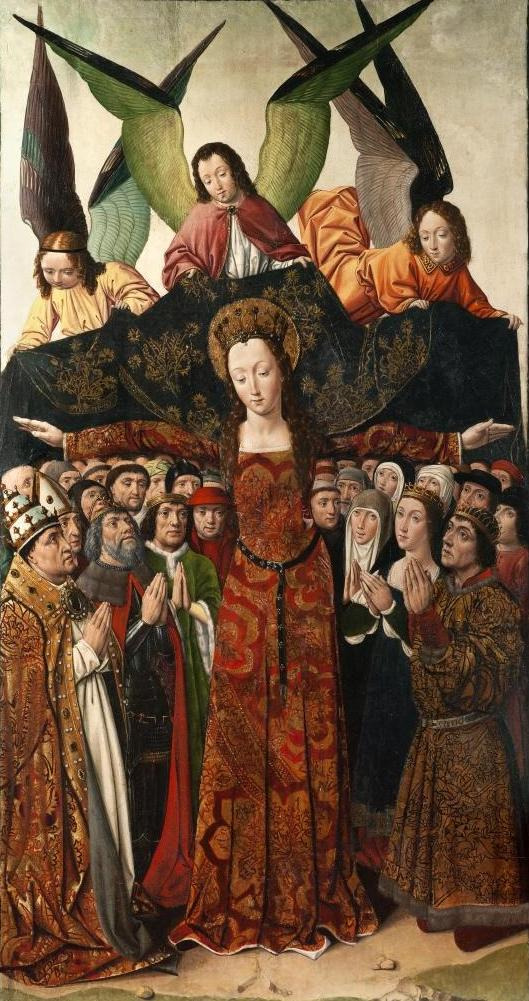
The painting was once part of altarpiece in convent Santa Clara in Palencia. On museum's webpage it says the identity of figure is certain because of inscription on King's belt.
Well, I can' find good enough version to be able to read it.
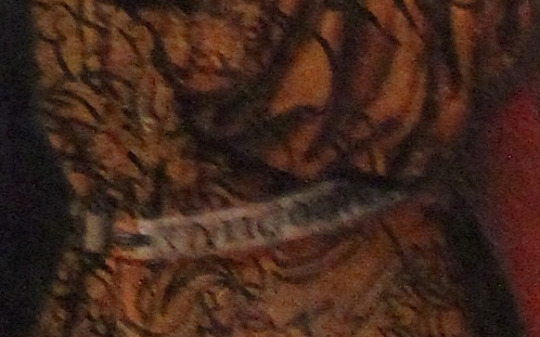
But I am pretty sure it is max his name, not name of his wife. Yet if not his wife, only other person who could be beside him would be his daughter Isabella herself...but she'd be unlikely to be depicted alone beside him(without any other family members)...So I am inclined to say it is indeed Isabella of Portugal.

But interestingly another figure probably originally from same altarpiece has very similiar features:
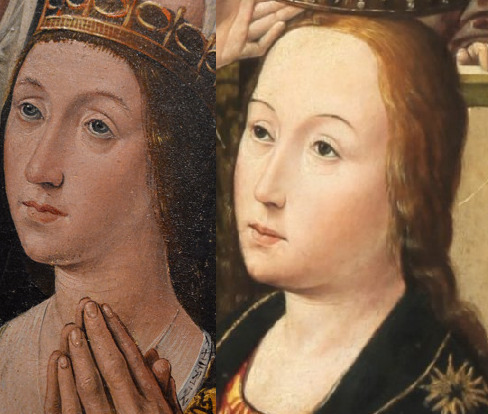
Which could be that artist simply made up these figures, and this was how he painted saints.
But at same time, these figures resemblence Isabella of Portugal's descendants...so posibly it is based upon some earlier depiction. Or he was chosen deliberately because his saints reminded Queen of her mother...It is thought Isabella I comissioned the painting.
(By the way Juan de Nalda was formerly known as Master of Santa Clara de Palencia(Maestro de Santa Clara) . But that altarpieces is now in pieces, so the figure on right(crowning of Virgin Mary) is in different museum entirely.)
So if we trust these to be at least partially accurate, it seems Isabella of Portugal, Queen of Castile had dark golden strawberry blond and grey eyes:

(But as I always says...grey eyes in portraits can be due to cheaper pigments being used...and blue fading over time...)
While her much older husband John II of Castile has dark hair and dark brown-grey eyes:

However period records describe his eyes as between blue and grey, his skin as fair(and slightly ruddy) and his hair the color of a mature hazelnut...

Hence obviously his depiction cannot be accurate. His skin, his hair and eyes are simply too dark.
By the way same thing plagues depictions of Ferdinand II of Aragon. I have no idea why that is. Why only depictions of men have this issue?

Anyway the portrait matches his tomb really well, but tomb was only finished in 1493... so both fallow looks chosen by Isabella...and we don't know how accurate it is. And if based upon earlier portrait, statue, ...idealized version in daughter's head...? Who knows?
Same tomb but Isabella of Portugal with slightly damaged nose and veins of marble, note that wrinkles on neck are there also:

The tombs are located in Miraflores Charterhouse, where also Isabella's brother Alfonso is burried. Basically she chose this as place to reburry her parents and younger brother and rebuild it accordingly.
Main altarpiece looks...to be honest kind of overwhelming. Lots of going on...But many altarpieces in Spain are in such style.
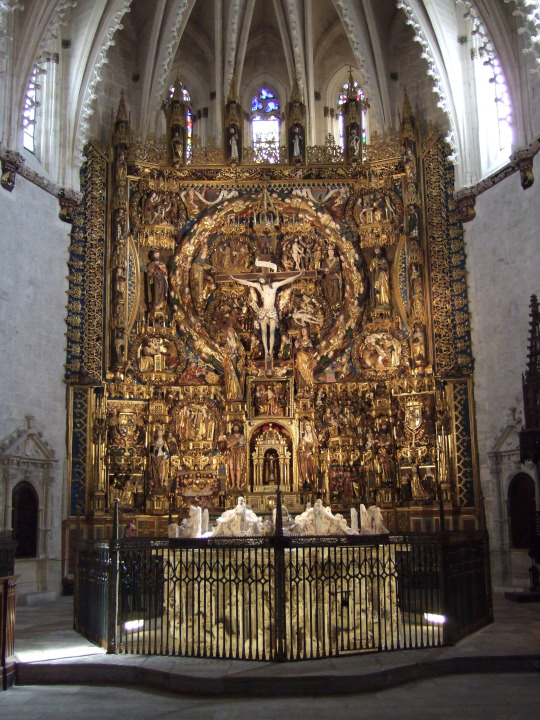
And it also contains figures of Queen Isabella's parents(and that is their tombs beneath that...):
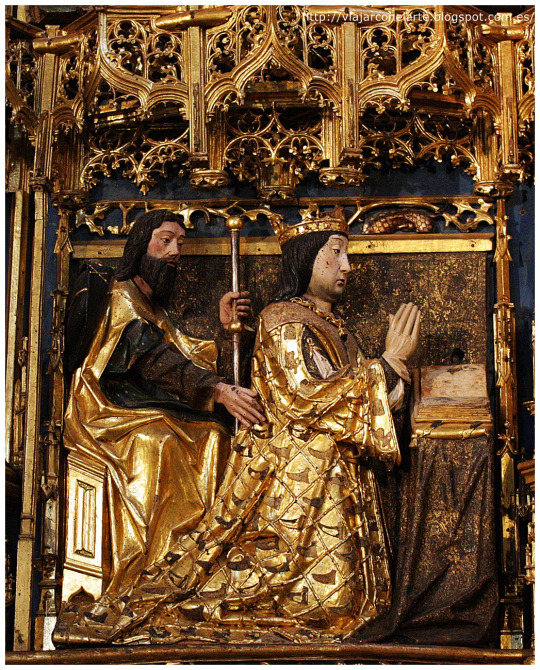

Here not much resemblence to anybody, but nice clothes...
So if anybody was interested Miraflores Chapterhouse is just few km from spanish city Burgos.
I know these probably aren't only depictions of the two, but these are certainly interesting ones.
29 notes
·
View notes
Text
Sophie Hélène Béatrix de France, Marie-Thérèse Charlotte de France,Élisabeth Louise Vigée Le Brun,Marie Antoinette with a Rose,Marie Antoinette,Louis XVI,Marie-Thérèse Charlotte,Louis Antoine of France, Duke of AngoulêmeLouis Joseph Xavier François,Louis XVII,Louis XVIII,Charles X,Maria Theresa of Savoy,Sophie d'Artois,Louis, Dauphin of France, Aubreigh Paige Wyatt, Ava Jordan Wood, Leiliana Wright, Star Hobson, Saffie-Rose Brenda Roussos, Lily Peters, Olivia Pratt Korbel, Elizabeth Shelley, Sara Sharif, Charlotte Figi, Jersey Dianne Bridgeman, Macie Hill, Sloan Mattingly, Audrii Cunningham, Athena Strand, Athena Brownfield, Leocadia Zorrilla, Francisco José de Goya y Lucientes, Josefa Bayeu, Francisco Javier Goya Bayeu,Charlotte Eckerman, Adolf Ulrik Wertmüller, La Belle Italienne, Mary Wollstonecraft Shelley, Anne Isabella Noel Byron, Elizabeth Cavendish, Duchess of Devonshire, Lady Elizabeth Finch-Hatton, Queen Elizabeth II, Barbara Shelley, Percy Shelley, Lady Elizabeth Pilfold Shelley, Anne Neville, John Winthrop, Mary Forth Winthrop, Margaret Tyndall Winthrop, Thomasine Winthrop, Elisabeth of Denmark, Anna von Brandenburg, Elisabeth von Brandenburg, Sir John Talbot, Elizabeth Wrottesley Talbot, Richard III, Edward of Middleham, Margaret Plantagenet, Anne Plantagenet Saint Leger, Elizabeth of York Plantagenet de la Pole Duchess of Suffolk, Edmund Plantagenet, Richard of York 3rd Duke of York, Lady Cecily de Neville Plantagenet, Katharine of Aragon, Henry Tudor, Elizabeth I, Isabella de Aragon, Juan de Aragón, Miguel da Paz, Prince of Asturias, Jacklyn Jaylen “Jackie” Cazares, Chief Thunder Cloud, Chief Yellow Thunder, Ernest White Thunder, Wa-Kin-Yan-Waste “Andrew” Good Thunder, Maggie Snana Brass,
2 notes
·
View notes
Text
Personification parent of the international countries frequently mentioned or that have physically appeared in WTTT
I wanted to figure out who would be Louisiana and Florida’s paternal grandparent and decided it wouldn’t be fair to the other countries. While there have been more countries mentioned than the one listed here; these are the countries that have appeared (Canada and Italy), mentioned multiple times (Spain and England), or were a running gag/important plot point/otherwise significant for another reason (Mexico and France)
I am a very strong proponent of each country having two government level personifications- one that handles national duties and one that handles international duties.
P.S Various sources are linked so history fans go nuts!
1) Canada - Prince Edward Island. Unable to link the main source which was the Founders’ Hall Exhibit in Charlottetown, PEI that I went to when I was vacationing there a few years ago. It was a fantastic museum that has sadly shut down. But we always have the Canadian government to keep the personified parent dream alive
2) Spain - Castile and Léon. This was interesting as, if Spain wasn’t mentioned to be Florida’s Dad (and Juan Ponce de Léon his step-dad) I would have gone with Andalusia due to the Constitution of Cádiz in which representatives from all over the Spanish Empire came together but Florida among others was already in existence when that happened. So I went with good old Isabella of Castile and Ferdinand of Aragon forming a dynastic union and setting up the foundation for a unified Spain. Why Castile and Léon and not Aragon? Because Isabella was born first and the castle in which they lived in El Alcazar de Segovia is in Castile and Léon AND the rumored inspiration for Cinderella's castle in Walt Disney World.
3) France - Île-de-France. Because love is stored in naming your child junior. I’m actually beefing with the entire country of France right now because the French loved to centralize and decentralize their country. Philippe II was the first king to call himself “King of the French” and by the time he was in power France had long had Paris as it’s capital even if it wasn’t necessarily the geographic France that we know of today and Philippe II even lived in Paris in his castle which is now the Louvre
4) Mexico - Guanajuato. Guanajuato even rang church bells to celebrate Mexico’s birth. Also this has nothing to do with history and more to do with culture but Guanajuato has a Kiss Alley where couples go to smooch to ensure 7 years of happiness and I’m- 🥺
5) England- Hampshire. Horrible Histories might have helped us remember William the Conqueror as the first English king (although he came from France) historians actually say Alfred the Great was the first one and the unifier of Anglo-Saxon England either way, Wessex was the birthplace of England Winchester was the capital of Wessex and that is way out of all the counties that make up what used to be Wessex, Hampshire is home to Winchester
6) Italy- Piedmont. This is also controversial as I am going with the unification of the Italian kingdom as the birthdate which makes Piedmont home to the first capital of Italy. Consequentially for all you IDC/Inter Italy shippers (me, it’s just me, I know but that’s OK) this means that the USA was already independent and was even able to recognize Italian independence’s credentials. IDC’s a cougar but like we been knew
#also random fun fact: england is the only one that has not been played by someone and therefore have no actor and their pronouns to be based#or be able to infer their gender i.e Mexico being implied to be a man#welcome to the table#wttt#once again if anyone that lives or was raised in one of these countries has more accurate information please let me know!!#this will be a 'living' list like my characters of colors one and will be updated if more join#this was really fun please enjoy everyone 🥺👉👈
21 notes
·
View notes
Text
A brief introduction to Aragonese Witchcraft
greetings to all! First of all i would like to point out that i don`t speak english so maybe my writing has some strange issues, also i i’m new in tumblr so i don`t how to make beautiful posts. Have patience with me please. Anyway.
Basque witchcraft trials and galician folklore are very well known, but its remarkable that the spaniard witch hunt begun in the northeast area (due to the conecction to France, where the Inquisition was founded). Catalonia and Aragon were the regions in which more witch trials took place, and they share the very rich and old folklore of the Pyrenees.
I would like to make a simple introduction into aragonese witchcraft, but before it i think that i should do a tiny presentation of Aragon.

Aragon is a region located in the northeast of the Iberian peninsule, bordering with France and other iberian regions like Catalonia, Navarre and Valencia. This is the land of the famous painter Francisco de Goya, and of other personalities like Catherine of Aragon (the first wife of Henry VIII), Michael Servetus, Baltasar Gracián, Joaquín Costa or Luis Buñuel (filmaker).
During the Middle Ages it was a reign of its own, but because of the marriage of the spanish catholic monarchs (Queen Isabelle I of Castile and King Ferdinand II of Aragon) the Aragonese Crown started to mix more with Castile originating the future concept of Spain. This map is a representation of the Crown of Aragon during 1492:
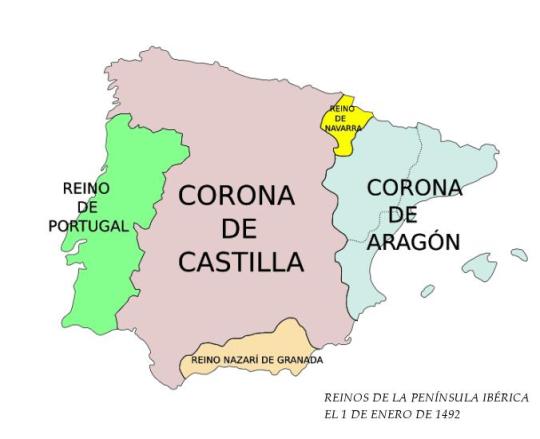
The Witch Hunt started in the peninsule in 1424 due to a pyrenean law that punished “those who go with witches” with death penaltie. In all the Pyrenean area the rumors about a devilish group of people that consorted with Satan weren’t new. The bloody prosecution of cathars influenciated the Crown of Aragon, bringing here not only the ideas about heretics and devil whorshippers but a bad fame to the french foreigns and a growing sensation of insecurity too.
In 1461 on Villanua (Bellanuga in aragonese) a woman named Guirandana of Lay was accused of being a sorceress, and after being carried to Jaca she was found guilty and burnt at the stake. Studies tell that she was probably of Béarnaise origin, and that she worked as a healer before her arrest. In her confessions Guirandana explained that she was the "cap e bordon" (leader) of a local group of poisoners (ponzoñer@s in aragonese), they would met on each other houses to concoct toxic potions and powders and teach the younger members about their making. Later, allegedly, they would poison townfolk because the Devil have told them to do so. Guirandana gave a recipe of a powder that she throwed to the ground in which her victims were stepping to cause the illnes, it was a grinded mix of toads and snakes' bones. Obviusly her confessions are very debatable because torment was presumably used.
Altought Guirandana wasn't accused of witchery at all, her trial set precedent to aragonese witch trials. With Guirandana some other people were likely carried to Jaca and burnt, but in the same area (Cenarbe, a dissapeared village very near) and only 37 years after her polemic a new hunting arosed. Three siblings were suspected of being witches, two of them (Maria and Juan) escaped, but one remained and was chased. She was Narbona Dacal, firstly interrogated by local judges (it was the secular judges and not the Inquisition who more witch hunts started on Spain) but afterwards some inquisitors that had have notice of devil whorshipping and heresy carried she to Zaragoza. In Zaragoza she was tortured and interrogated, her confession depicted a secret cult to the Boc of Biterna (the he-goat of Biterna). Elements like the pact with the Devil and the sacrilege associated with the term "witch" appeared for first time in Aragon with this case. She was burnt at the stake, and on later months other women like Gracia la Valle burnt on september of the same year or Maria (unknown surname, "wife of Garcia Biessa") burnt in 1499 were prosecuted under the witchcraft charge. Since Guirandana in 1461 up to 1645, the aragonese witch trials took place.
Simultaneously as the witch trials were developing, they were arrested also those accused of practising sorcery, divination, necromancy or folk healing. Commonly their penalties were less harsh than those of witches supects, being very rare death and more frequent flagellation, public repentance, humiliation and exile. In a lot of cases witchcraft charge was accompanied by sorcery or poisoning accusations, specially cause "ponzoñería"/"metzinería" (the term in aragonese, and in catalan) was not only considered poison making but specifically witch poison making. The catalan word "metzina" came from the latin and remained the antique ambiguity of poison and medicine.
That made easy the witch accusations to healers and midwifes.

if you like this post perhaps i will write about specific aragonese witch trials or about the figure of the Boc o Biterna. Finally i have to warn you that the vast majority of bibliography is in spanish.
BIBLIOGRAPHY:
· “Abracadabra Omnipotens. Magia urbana en Zaragoza en la Edad Moderna” by María Tausiet Carlés. (this is available in english on the internet).
· “Brujería e Inquisición en Aragón” by Ángel Gari Lacruz.
· “Eros y Tánatos. Brujería, hechicería y superstición en España.” by Juan Blázquez Miguel.
· “Europe’s inner demons” by Norman Cohn.
· “Guirandana de Lay, hechicera, ¿bruja? y ponzoñera de Villanúa (Alto Aragón), según un proceso criminal del año 1461” by José Antonio Fernández Otal.
· “La bruixeria a través de les Ordinacions D’Àneu” by Ángel Gari Lacruz.
· “La brujería en los Pirineos (siglos XIII al XVII). Aproximación a su historia” by Ángel Gari Lacruz.
· “La Mala Semilla. Nuevos casos de brujas” by Carlos Garcés Manau.
· “Las brujas en la historia de España” by Carmelo Lisón Tolosana.
· “Nuevos datos sobre brujería y superstición en Sobrarbe. Siglos XV-XVII” by Manuel López Dueso.
· “Origens i evolució de la cacera de bruixes a Catalunya (segles XV-XVI)” by Pau Castell Granados.
· “Ponzoña en los ojos. Brujería y superstición en Aragón en el siglo XVI” by María Tausiet Carlés.
· “Procesos criminales en el arzobispado de Zaragoza” by M. I. Falcón Pérez y M. A. Motis Dolader.
· “Sanar y dañar en la Baja Edad Media: la medicina, la magia, la brujería y su relación con la sociedad cristiana occidental” by María Pilar García Romano.
· “Vienen de noche. Estudios sobre brujería y la Otredad” by Júlia Carreras Tort. (Co-founder of OccvltaCrafts).
· “Wine vat witches suffocate children. The mythical components of the Iberian Witch” by Pau Castell Granados.
· “Witch or Demon? Fairies, Vampires and Nightmares in Early Modern Spain” by Fabián Alejandro Campagne.
In addition, I have read and reviewed some of the original manuscripts of the trials. Some (very few) are available to read and download online at https://dara.aragon.es/opac/app/results/?p=0&q=brujeria&ob=re:1&vm=nv
#traditional witchcraft#witch hunt#witch history#spain#aragon#folklore#witchcraf#sorcery#poison path#poison making#ponzoñeria#metzineria#pyrenees#zaragoza#catalonia
21 notes
·
View notes
Text

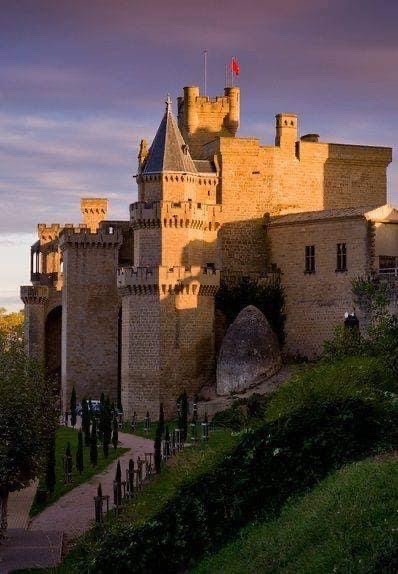



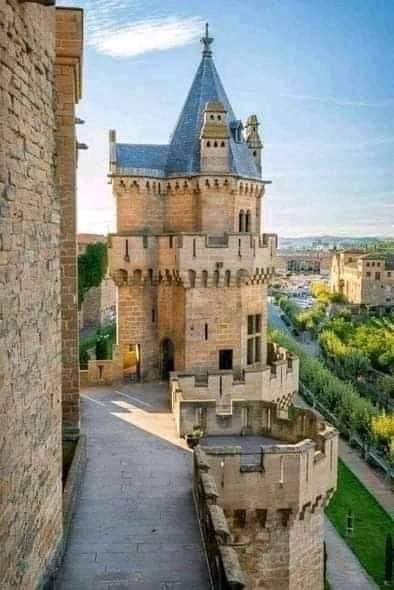




Olite Castle (Palacio Real de Olite), Navarre, Spain 🏰🇪🇸
The Royal Castle of Olite (Palacio Real de Olite) is a former castle of the kings of Navarre, situated in northern Spain.
Olite castle symbolizes the unique character of the Navarre monarchy in the late medieval period, open to Europe through its interests in France and in contact with the other kingdoms of the Iberian Peninsula.
The first castle, designated the ‘palace of the kings of Navarre’ in 13th-century documents, had been laid out at an unknown date on the site of a Roman praetorium of the 1st century AD; only its outer walls survive, with some Roman foundations, now incorporating the Parador de Turismo.
Olite castle served as a residence for the governors during the kings’ long absences in France, but with the accession of the Evreux dynasty (1328) it became a favourite royal seat, owing to its pleasant climate and position in a rich wooded valley with abundant hunting.
Queen Joanna II (1328–1349) and King Philip III of Evreux (1328–1343), followed by Charles II (1349–1387), all made some improvements to the old castle, but it was during the reign of Charles III (1387–1425) and his wife Eleanor of Castile that this nucleus was expanded, with the construction of new ranges in the space behind the 13th-century church of S María. For this work, begun in April 1399 and continuing, with some interruptions, until 1420, Charles assembled artists of widespread origins.
Many of the painters were from Catalonia, working initially under Master Enrique and then in the second decade of the 15th century under Juan de Laguardia; French artists such as Jacob le Conte and Juan du Ruisel collaborated on the decoration; glass painters came from Aragon and Flanders; and Moors from Tudela were engaged on plasterwork, carpentry and tiled decoration.
The irregular plan of Olite reflects its construction in stages, as the wishes of the patrons developed. The new ranges, with halls, bedrooms, terraces and a chapel dedicated to St George, were linked to courtyards and gardens by hanging galleries and corridors; numerous towers (the keep, the Torre del Homenaje, the Torre Nueva, the Tres Coronas and Cuatro Vientos) crowned the walls, forming an elegant silhouette against the horizon . The massive walls, with only a few slit windows, accentuated the fortified character of Olite, but this was in strong contrast to the luxurious interior.
Charles’s daughter Blanche (1425–1441), wife of the future King of Aragon, John I, continued building works at Olite, and the castle again became an official residence after Navarre lost its independence to Castile in 1515.
Subsequent documents record its gradual decline, despite continual repairs. One of the towers was burnt in 1794, and in 1813, during the Peninsular War, the castle was burnt to prevent its use by the enemy ‘and its interior ruined’.
The ruins were acquired by the provincial government in 1913, and in 1925 Olite castle was declared a national monument to save it from total destruction. Restoration work, begun in 1937, is now well advanced, but although the documents give some indication of the original state, there are difficulties in achieving it.
7 notes
·
View notes
Text

María Enríquez de Luna (1474 – 1539) was the wife of Juan (Giovanni) Borgia, second Duke of Gandía. Her father was, Enrique Enríquez de Quiñones, making her paternal grandfather Fadrique Enríquez. Her aunt, Juana Enríquez, was Queen of Aragon by marriage to John II of Aragon. Therefore, she was a first cousin of King Ferdinand II of Aragon. She married Juan somewhere between 1493 and 1494, and together, they had two children: Juan de Borja y Enríquez (known as Juan Borgia), who became the 3rd Duke of Gandía, and Isabel de Borja y Enríquez, who was born shortly after her father was killed and never knew him. The younger Juan was the father of Saint Francis Borgia. Isabel grew up to be abbess of Santa Clara in Gandía. In personality, María was very intelligent, devout, financially shrewd, and devoted to her husband and children, in contrast to her husband, who was regarded by many as a womanizer, a gambler, a drunkard, and an incompetent general.
Sometime after the end of Pope Alexander VI's papacy, María, along with her aunt Isabella of Castile, tried to press murder charges against her brother-in-law, Cesare Borgia for the alleged murder of her husband Juan.
0 notes
Text
Por cierto..hablando de PUTOS IDOLOS DE ORO Y PUTA MUJER..hoy hace un año fotografie un puto partido de fútbol femenino [en este caso lo llamo puto xq deberían estar follando porque FALTA AMOR=cd debut de los MEXICANOS MANA en cuyo libreto del cd SUEÑOS LIQUIDOS sale LETIZIA ORTIZ en TOP LESS con un AVION de papel ardiendo]..e incluso hace falta que DEN A LUZ HIJOS en este PUTO PAIS DE VIEJOS E INMIGRANTES..
..partido en las instalaciones deportivas del PUTO MERCENARIO LUIS ARAGONES AL QUE IDOLATRABAN en el ESTADIO MANZANA+eRES como si fuera un DIOS [y el cual apesar de ganar la EUROCOPA de 2008 como SELECCIONADOR y en vez de preparar el MUNDIAL 2010 se fue a TURQUIA a por MAS DINERO..sustituyendole DEL BOSQUE q vino a verme a hacer la prueba en el PUTO REAL MADRID xq era amigo de la INFANCIA en SALAMANCA de MARCIANO MARTIN el padre de mi amigo y vecino Daniel Martín León al que seleccionaron y a mi tras dejarme la primera parte del partidillo en el banquillo y en la 2da parte marcar 2 goles, uno de TIJERA NO..luego le partiría la boca a DANIEL MARTIN=Cantante del CANTO DEL LOCO..en la PISCINA DE LA URBANIZACION..XQ SE VOLVIO UN CHULO MADRIDISTA y se me Dan bien muchos deportes como el BOXEO eso sí todo AMATEUR O AFICIONADO]..donde jugué al fútbol en enero de 2007 contra el equipo de los PEREZA [me animaron mis amigos a jugar al encontrarmelos a la salida del NH BARAJAS donde estaba tras más de 1 mes vagabundeando preparado para irme a LOS ANGELES tras AXL ROSE de GUNS N ROSES tal como le conté a PABLO CONEJO TORRES días antes o hermano de LEIVA DE PEREZA..gracias a que el de CORREOS=TENED ORGASMOS..me conocía y me dio la nueva dirección de sus PADRES]..empatando hasta en los Penales marcando yo el ULTIMO POR LA ESCUADRA tras jugar por primera vez al FUTBOL en 13 años [aparte de jugar un partido de fútbol sala donde me lesione y me escayolaron justo después de ver a JUAN PABLO II desde el cruce calle madre de DIOS y avda PIO XII]..pidiéndole al final a LEIVA [último que he visto fuera de Madrid o al aire libre en un PUTO FESTIVAL] su email ..y al día siguiente vinieron al hotel NH BARAJAS a llevarme al psikiatriko tras 12 horas PERTRECHADO con la cama KING SIZE entre la PUERTA Y LA PARED DEL BAÑO..x lo q los BOMB_EROS empezaron a ROMPER LA PARED..luego tras decir a mis amigos que estaban en el HALL q me habían traicionado y decirme que no podían hacer nada o cuando me iban a subir a la AMBULANCIA empuje al POLICIA Y SALI CORRIENDO en camiseta pero tras correr como 300 mts me tenían rodeado las PATRULLAS QUE INCLUSO CRUZARON EL PARQUE EN EL QUE ME RESBALE EN EL CESPED AL ESTAR MOJADO O LLOVIENDO
También hoy hace un año fotografie las PUTAS NIKE AIR JORDAN de una cuidadora NEGRA o de SANTO DOMINGO que venía a casa por mi madre
Por otro lado me recuerdan no se porque que en enero 2015 visite el PUTO BERNABEU [q junto a él hay unos bancos de ladrillos con las selecciones q jugaron el MUNDIAL DE ESPAÑA 82..donde el SALVADOR Y PERU están juntos con pintada T_AMARA] y luego la expo del PUTO HERNAN CORTES..CONQUISTADOR DE MEXICO Quemando sus naves en VERACRUZ [1era ciudad fundada x europeos en AME_RICA] en el CANAL DE AGUA de ISABEL II sito en plaza CASTILLA




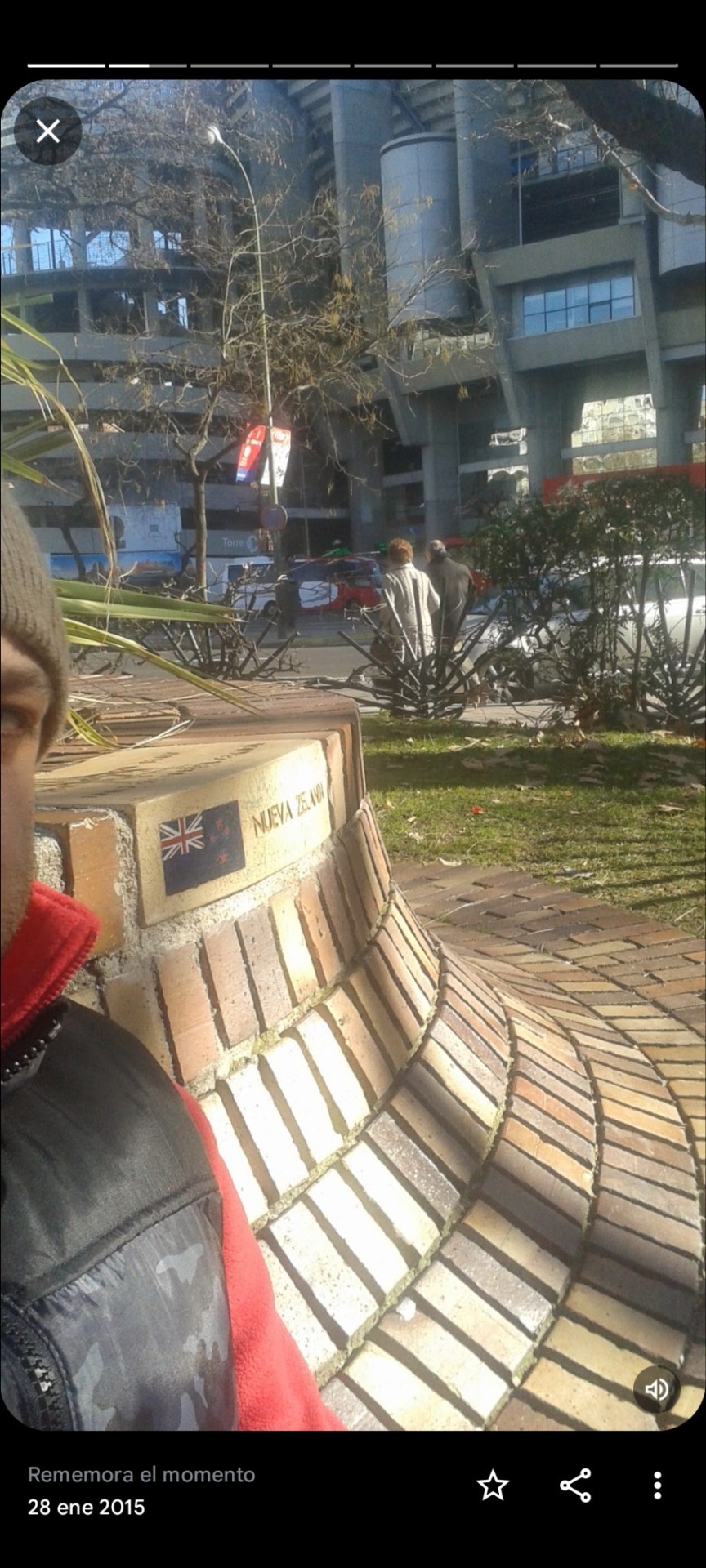



0 notes
Photo

Palacio renacentista Aunque poco se sabe exactamente del origen de este inmueble, la casa -muy próxima a la iglesia de La Magdalena y a la antigua puerta de Valencia– comenzó a construirse ya entrado el siglo XVI. Zaragoza en el siglo XVI era una ciudad rica. Esta riqueza se podía medir por los edificios que se construyeron en esa época; de los casi 200 palacios que existieron hoy en día sólo se conservan un pequeño número, entre ellos esta casa-palacio que hoy vamos a comentar. Si las paredes del edificio hablaran podrían contar historias de nobles, traiciones, audiencias, amoríos, belicosos proyectos… Se cuenta que lo habitó Juan Campi, que fue el Justicia que sucedió a Juan de Lanuza tras su decapitación en 1591 después de haberse enfrentado a la voluntad de Felipe II en defensa de los Fueros de Aragón. Entre sus insignes moradores figura Ignacio Jordán de Asso, a quien recuerda una de las estatuas del Paraninfo. (en Zaragoza, Aragon - España) https://www.instagram.com/p/Cp-OMrJqrnd/?igshid=NGJjMDIxMWI=
0 notes
Text
Spain is a country with a rich history that spans back over 35,000 years. From the prehistoric Iberians, to the Roman Empire, the Muslim Moors, the Spanish Inquisition, and the modern day monarchy, Spain's history has been a fascinating tale of diverse cultures and conquests.
Prehistoric Spain was home to the Iberians, a group of people who lived in the eastern and southern regions of the country. They were skilled in metallurgy and agriculture, and built impressive hill forts and settlements. The Iberians were later conquered by the Carthaginians in the 3rd century BC, who were then defeated by the Roman Empire in the 2nd century BC.
Under Roman rule, Spain became known as Hispania and was a key part of the Roman Empire. The Romans introduced new infrastructure such as aqueducts, roads, and public buildings, and also brought Christianity to the region. After the collapse of the Western Roman Empire, Spain was invaded by Germanic tribes such as the Visigoths, who ruled the country for nearly three centuries.
In 711 AD, the Moors, a Muslim army from North Africa, invaded Spain and quickly conquered the entire peninsula. They introduced new architectural styles, such as the horseshoe arch and the minaret, and brought advancements in mathematics, astronomy, and medicine. The Moors' rule lasted for over 700 years until the Christian Reconquista began in the 11th century.
The Reconquista was a period of Christian expansion, during which Spanish kingdoms slowly regained territory from the Moors. The Reconquista was marked by famous battles such as the Battle of Las Navas de Tolosa in 1212 and the fall of Granada in 1492. During this period, Spain also experienced the Spanish Inquisition, a brutal campaign to enforce religious orthodoxy in the country.
In 1469, the Catholic Monarchs, Queen Isabella I of Castile and King Ferdinand II of Aragon, married and united their kingdoms. They completed the Reconquista, expelled the Moors, and sent Christopher Columbus on his voyage to the Americas. Under their rule, Spain became a major colonial power, with territories in the Americas, Africa, and Asia.
The 19th century saw a series of political upheavals in Spain, including the Peninsular War against Napoleon's French Empire, the First Spanish Republic, and the reign of King Alfonso XIII. In 1936, Spain was plunged into civil war between the democratically-elected government and a group of nationalist rebels led by General Francisco Franco. Franco's victory in 1939 ushered in a period of dictatorship that lasted until his death in 1975.
Since Franco's death, Spain has been a parliamentary monarchy, with King Juan Carlos I overseeing the country's transition to democracy in the 1970s. Spain has since become a member of the European Union and has experienced significant economic growth and cultural resurgence.
In conclusion, Spain's history is a complex tapestry of diverse cultures and empires, marked by conquests, wars, and cultural exchanges. From the prehistoric Iberians to the modern-day monarchy, Spain's rich history continues to fascinate and inspire.

1 note
·
View note
Text
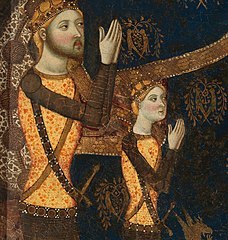

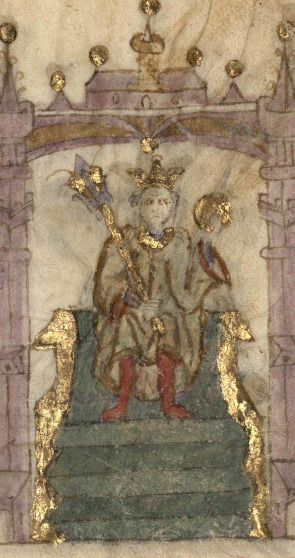
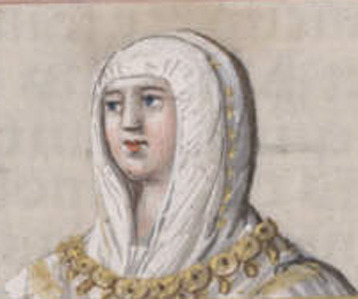
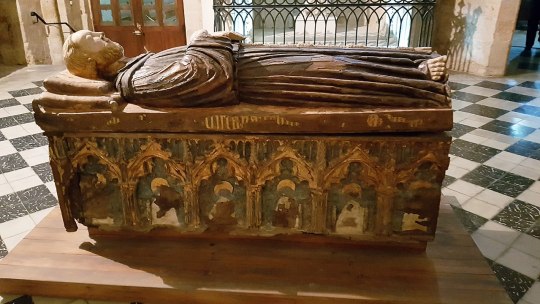
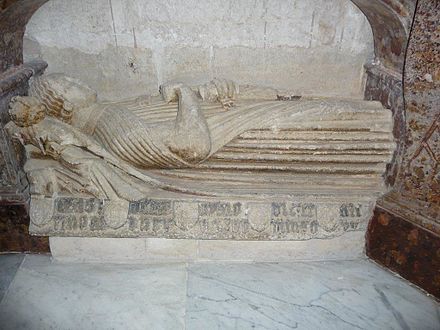

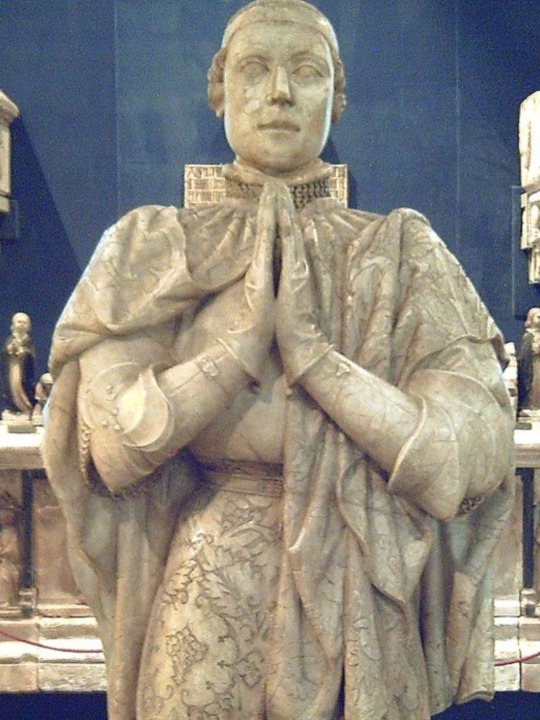
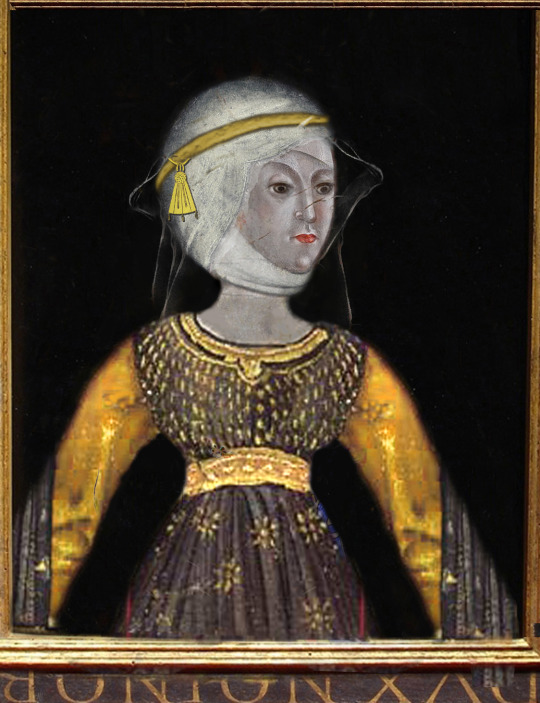

The Bastard Kings and their families
This is series of posts are complementary to this historical parallels post from the JON SNOW FORTNIGHT EVENT, and it's purpouse to discover the lives of medieval bastard kings, and the following posts are meant to collect portraits of those kings and their close relatives.
In many cases it's difficult to find contemporary art of their period, so some of the portrayals are subsequent.
1) Henry II of Castile ( 1334 – 1379), son of Alfonso XI of Castile and Leonor de Guzmán; and his son with Juana Manuel de Villena, John I of Castile (1358 – 1390)
2) His wife, Juana Manuel de Villena (1339 – 1381), daughter of Juan Manuel de Villena and his wife Blanca de la Cerda y Lara; with their daughter, Eleanor of Castile (1363 – 1415/1416)
3) His father, Alfonso XI of Castile (1311 – 1350), son of Ferdinand IV of Castile and his wife Constance of Portugal
4) His mother, Leonor de Guzmán y Ponce de León (1310–1351), daughter of Pedro Núñez de Guzmán and his wife Beatriz Ponce de León
5) His brother, Tello Alfonso of Castile (1337–1370), son of Alfonso XI of Castile and Leonor de Guzmán
6) His brother, Sancho Alfonso of Castile (1343–1375), son of Alfonso XI of Castile and Leonor de Guzmán
7) Daughters in law:
I. Eleonor of Aragon (20 February 1358 – 13 August 1382), daughter of Peter IV of Aragon and his wife Eleanor of Sicily; John I of Castile's first wife
II. Beatrice of Portugal (1373 – c. 1420) daughter of Ferdinand I of Portugal and his wife Leonor Teles de Meneses; John I of Castile's second wife
Son in law:
III. Charles III of Navarre (1361 –1425), son of Charles II of Navarre and Joan of Valois; Eleanor of Castile's huband
8) His brother, Peter I of Castile (1334 – 1369), son of Alfonso XI of Castile and Mary of Portugal
9) His niece, Isabella of Castile (1355 – 1392), daughter of Peter I of Castile and María de Padilla
10) His niece, Constance of Castile (1354 – 1394), daughter of Peter I of Castile and María de Padilla
#jonsnowfortnightevent2023#henry ii of castile#john i of castile#juana manuel de villena#eleanor of castile#alfonso xi of castile#leonor de guzmán#tello alfonso of castile#sancho alfonso of castile#peter i of castile#constance of castile#isabella of castile#asoiaf#a song of ice and fire#day 10#echoes of the past#historical parallels#medieval bastard kings#bastard kings and their families#eleanor of aragon#beatrice of portugal#charles iii of navarre#canonjonsnow
15 notes
·
View notes
Text
January 05

[1855] King Camp Gillette, American inventor and first manufacturer of a razor with disposable blades, was born.
[1931] Robert Duvall, American award-winning actor and filmmaker, born in San Diego, California.
[1934] Eddy Pieters Graafland OON, Dutch football goalkeeper, born in Amsterdam, Netherlands.
[1938] Piet Kruiver, Dutch footballer, born in Koog aan de Zaan, Netherlands.
[1938] Juan Carlos I, King of Spain (1975-2014), born in Rome, Italy.
[1946] Diane Keaton, American actress, born in Los Angeles, California.
[1951] Steve Arnold, English footballer, born in Willesden, London.
[1960] Glenn Strömberg, Swedish footballer, born in Lundby Gothenburg, Sweden.
[1965] Vinnie Jones, English-born Welsh footballer and actor, born in Watford, United Kingdom.
[1969] Marilyn Manson, American shock-rock singer-songwriter, artist and actor, born in Canton, Ohio.
[1975] Bradley Cooper, American actor, born in Philadelphia, Pennsylvania.
[1976] Diego Tristán, Spanish footballer, born in La Algaba, Spain.
[1978] January Jones, American actress and model, born in Sioux Falls, South Dakota.
[1979] Ronnie O'Brien, Irish footballer, born in Bray, County Wicklow.
[1986] Teppei Koike, Japanese actor and singer, born in Osaka Prefecture, Japan.
[1989] Krisztián Németh, Hungarian football striker, born in Győr, Hungary.

[1066] Edward the Confessor, King of England (1042-66) and the last King from the House of Wessex, dies at around 60 to 63.
[1286] Zhenjin, Crown Prince of the Mongol Empire, dies at 43.
[1387] Pedro IV, King of Aragon/conqueror of Sicily, dies at 67.
[1448] Christopher of Bavaria, King of Denmark (1440-48), Norway (1441-48) and Sweden (1442-48), dies suddenly at 31.
[1477] Charles the Bold, Duke of Burgundy (1467-77), killed in the Battle of Nancy by Swiss mercenaries at 43.
[1589] Catherine de' Medici, Italian born Queen Consort to King Henry II of France and later regent to her sons, dies at 69.
[1762] Elizabeth of Russia, Empress of Russia (1741-62) and daughter of Peter the Great, dies at 52.
[1827] Frederick Augustus, Duke of York and Albany, second son of King George III of Great Britain, died.
[1929] Nicholas Nikolaevich Romanov, Grand Duke of Russia and General in World War I (1914-18), dies at 72.
[2014] Eusébio da Silva Ferreira, Portuguese footballer, dies from heart failure at 71.
[2018] Antonio Valentín Angelillo, Italian-Argentinian footballer dies at 80.
[2019] Dragoslav Šekularac, Serbian footballer dies at 81.
[2020] Hans Tilkowski, German football goalkeeper, dies at 84.
[2021] Colin Bell, English football midfielder, dies at 74.
#on this day in history#on this day#otdih#otd#january#rest in peace#birthdays#january 05#football history#football#diane keaton#marilyn manson#bradley cooper#january jones#teppei koike#juan carlos i#edward the confessor#charles the bold#catherine de' medici#elizabeth of russia
1 note
·
View note
Text
Juanna la locad childhood

JUANNA LA LOCAD CHILDHOOD SERIES
The foreign candidate is Louis of Anjou (☁377), contested King of Naples, OTL husband of Joans's half-sister. It would strengthen the claim of Joana (but Martin, his son and grandson are still senior to Urgell in the genealogy of the house) and gave her a much-needed base of power. Having said that, if Joana and Mathew, with uncanny political wisdom, managed to play the Catalan élites in their favour but Mathew died childless as OTL, the logical local candidate is James of Urgell (☁380), heir to the most senior noble of Catalonia and male scion of the house of Barcelona. This contrasts with the other players of the "game of thrones" who were linked to powerful foreign royal families. A scion of a junior line of the Foix family part of the Catalan aristocracy for some generations, both his mother and his grandmother came from undistinguished families and his only cousins, the Count of Pallars and the Viscount of Cabrera, actually fought against him in 1396. Another disadvantage for Mathew and Joana : the relatively low-level genealogical connections of the Count of Foix. That did not stop Mathew of Foix to invade Catalonia in 1396 OTL, but he was easily repelled by Martin, as he did not have any local support. Finally, the queen was still in childbearing age (she was pregnant when John Ist died), so why bother to change the rules (and convince the troublesome corts to go along) ?įor all these reasons, I found it very unlikely John Ist would ever change the rules of inheritance in favour of his first marriage's daughter. He even titled his sons "Dauphin of Girona" ! Furthermore, the salic system of inheritance (as illustrated by the french laws of succession) was already installed in the crown Aragon by the will of James Ist - even if the kingdom of Aragon itself had known a female transmission. John Ist, both by personal inclination and by his second wife's influence, was very close to France. How might Aragon develop otherwise? Who might she remarry if Mathieu still leaves her without children (let's assume the problem was his, not hers) so in 1398 she's a 23 year-old widow who's also a queen of Aragón, Valencia, Majorca, Sardinia and Corsica, Countess of Barcelona. Now, what if Juan had somehow passed a law that stipulated his daughters could succeed in lack of a male heir? Or Juana had been successful in claiming the crown on her father's death in 1395. Plus, Mathieu died in '98, but Juana never remarried, and even in her own lifetime, in spite of being the senior Aragonese claimant, her younger half-sister, Yolanda, claimed the Aragonese crown. Still OTL, Juana had no children from her marriage to Mathieu, Comte de Foix, but when her father died in '95, she'd only been married to Mathieu for two years. However, Martin was having some issues with the Sicilian nobility and as a result, his wife, Maria de Luna, had to secure the Aragonese realm until he could arrive. OTL, when her father died without sons, the Aragonese crown passed to his brother, King Martin of Sicily. The Institute is continually accepting new book and edition proposals.No, not Juana la Loca, daughter of Fernando II of Aragon, but the daughter of King Juan I of Aragon.
JUANNA LA LOCAD CHILDHOOD SERIES
Reference works are published in the series RMS. Significant collections of papers appear in MISC. Published treatises include the works of influential writers from Guido of Arezzo to Jean Philippe Rameau. Significant research findings resulting from the edition-making efforts are published in the series MSD. (See CMM for sacred and secular music and CEKM for keyboard music). The scholarly editions include the complete works of major composers who lived up until the seventeenth century, composers such as Machaut, La Rue, Dufay, Willaert, Clemens, Rore, Compère, Crecquillon, Romero, and others. The publications of the Institute are wide-ranging and comprise scholarly editions, books, and treatises. Since its founding, the Institute has published more than 650 scholarly volumes including the yearbook Musica Disciplina. The publications of the Institute are used by scholars and performers alike and constitute a major core collection of early music and theoretical writings on music. Founded by Armen Carapetyan in 1946, AIM supports interest in Medieval, Renaissance, and early Baroque music.

0 notes
Text
Here's a tribute to June 10th 2012 birthday and rest in peace Angels Sophie Hélène Béatrix de France, Marie-Thérèse Charlotte de France,Élisabeth Louise Vigée Le Brun,Marie Antoinette with a Rose,Marie Antoinette,Louis XVI,Marie-Thérèse Charlotte,Louis Antoine of France, Duke of AngoulêmeLouis Joseph Xavier François,Louis XVII,Louis XVIII,Charles X,Maria Theresa of Savoy,Sophie d'Artois,Louis, Dauphin of France, Aubreigh Paige Wyatt, Ava Jordan Wood, Leiliana Wright, Star Hobson, Saffie-Rose Brenda Roussos, Lily Peters, Olivia Pratt Korbel, Elizabeth Shelley, Sara Sharif, Charlotte Figi, Jersey Dianne Bridgeman, Macie Hill, Sloan Mattingly, Audrii Cunningham, Athena Strand, Athena Brownfield, Leocadia Zorrilla, Francisco José de Goya y Lucientes, Josefa Bayeu, Francisco Javier Goya Bayeu,Charlotte Eckerman, Adolf Ulrik Wertmüller, La Belle Italienne, Mary Wollstonecraft Shelley, Anne Isabella Noel Byron, Elizabeth Cavendish, Duchess of Devonshire, Lady Elizabeth Finch-Hatton, Queen Elizabeth II, Barbara Shelley, Percy Shelley, Lady Elizabeth Pilfold Shelley, Anne Neville, John Winthrop, Mary Forth Winthrop, Margaret Tyndall Winthrop, Thomasine Winthrop, Elisabeth of Denmark, Anna von Brandenburg, Elisabeth von Brandenburg, Sir John Talbot, Elizabeth Wrottesley Talbot, Richard III, Edward of Middleham, Margaret Plantagenet, Anne Plantagenet Saint Leger, Elizabeth of York Plantagenet de la Pole Duchess of Suffolk, Edmund Plantagenet, Richard of York 3rd Duke of York, Lady Cecily de Neville Plantagenet, Katharine of Aragon, Henry Tudor, Elizabeth I, Isabella de Aragon, Juan de Aragón, Miguel da Paz, Prince of Asturias, Jacklyn Jaylen “Jackie” Cazares, Chief Thunder Cloud, Chief Yellow Thunder, Ernest White Thunder, Wa-Kin-Yan-Waste “Andrew” Good Thunder, Maggie Snana Brass, Catherine Violet Hubbard,
1 note
·
View note
Photo






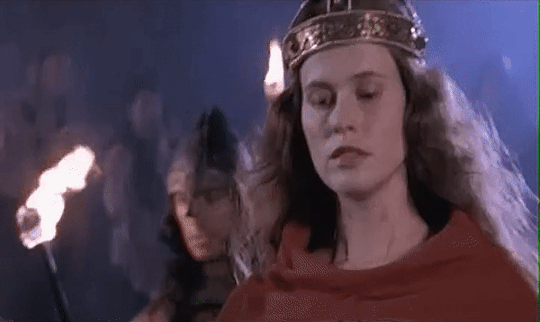
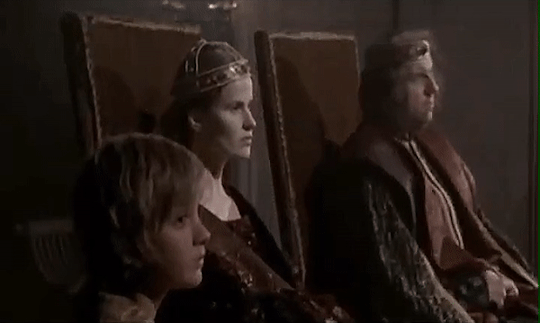

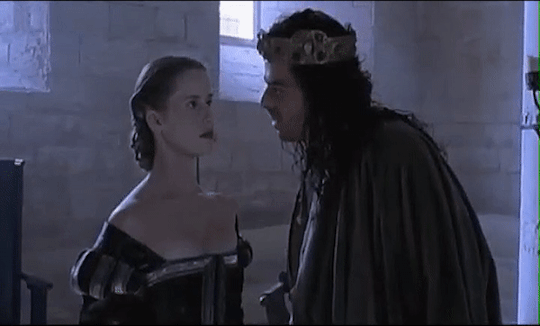
Juana Enríquez de Córdoba, Lady of Casarrubios del Monte, was a Castilian noblewoman who became Queen of the Kingdoms of the Crown of Aragon as second wife of King Juan II of Aragon. She was mother of Fernando II of Aragon, the Catholic King, and Juana of Aragon, Queen consort of Naples.
Juana Enríquez era en realidad una mujer de gran coraje, de extraordinaria finura y decisión, de invencible tenacidad, y todas estas cualidades, que habían de convertirla en un diplomático de primer orden, no perjudicaron para nada en ella las gracias femeninas. Sus adversarios más reacios estaban encantados por su ánimo, quedaban ganados por su sencillez y su modestia, y todos admiraban la claridad de sus respuestas, su buen juicio, su paciencia a toda prueba en las circunstancias más difíciles. Fue para su marido la auxiliar más preciosa y devota; y si su reputación ha sufrido algún daño, la culpa es sobre todo de Juan II, hombre cruel y colérico a cuyos designios sirvió demasiado como para no parecer su cómplice.
(Desdevises du Dezert, op. cit., p. 240)
Tanto la radiografía política como la memoria de la actuación como reina y lugarteniente de la Corona de Aragón de Juana Enríquez son dos empresas difíciles de resolver. Por un lado, porque se trata de un personaje moldeado por la propaganda y la opinión pública ya desde el momento histórico en el que transcurre su vida, en especial como consecuencia de la imagen de madrastra de Carlos de Viana, un papel que ha llevado incluso a postularla como la promotora de la muerte del príncipe, en aras de allanar el camino de su hijo, el todavía infante Fernando, al trono de Aragón. Por otro, por su participación en la gestión del conflicto con los payeses de Remensa, en pro de los intereses de la monarquía ante la nobleza catalana, haciendo de su imagen la de una mujer despiadada y autoritaria, cuyo perfil traspasó el relato historiográfico para convertirse en retrato teatral contemporáneo.
Más allá de las características personales y los intereses políticos de doña Juana, los años que transcurrieron mientras fue reina de Aragón estuvieron plagados de dificultades, que como tal quedaron recogidos en la documentación conservada a propósito. Los sucesos derivados del estallido de la Guerra Civil Catalana contra Juan II de Aragón llevaron al rey a abandonar el reino y a nombrar a su esposa lugarteniente general de la Corona aragonesa. Se abría entonces casi una década de gran efervescencia política, pero sobre todo militar, para el territorio de la Corona aragonesa que doña Juana debía resolver en nombre de su marido, pero también para salvaguardar los intereses de su hijo, el infante don Fernando, en calidad de «reina-tudriu» del heredero al trono. Estas circunstancias redundaron en que la huella dejada por la reina fuera sustancialmente distinta a la de sus antecesoras, incluso la de aquellas que también habían ocupado la figura de la Lugartenencia, del que sería quizá el mejor ejemplo el caso de la esposa de Alfonso V de Aragón, la reina María de Castilla.
Diana Pelaz Flores, Las mujeres de la reina. Estrategias de colaboración femenina a través de la cancillería de Juana Enríquez, lugarteniente de Aragón (1461-1468)
#Juana Enríquez#Florence Darel#Carles princep de Viana#periodramaedit#Women in history#Spanish history#Fernando II de Aragon#Juan II de Aragon#Ferdinand II of Aragon#John II of Aragon
40 notes
·
View notes